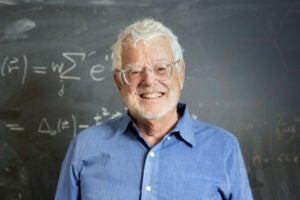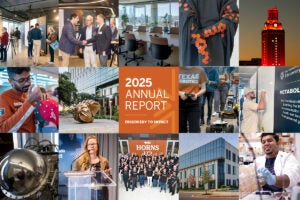Abby Bassett was only four weeks old when what seemed to be a mild cold turned into a much harsher reality.
The newborn was diagnosed with pertussis, or whooping cough, a disease that claims the lives of 195,000 children across the globe annually.
“As Abby was clinging to life in the intensive care unit, I just couldn’t believe that even after decades of research, there were no treatments that were specific for pertussis,” says Suzanne Bassett, Abby’s mother. “I knew that we could lose her at any moment. It was such a hopeless feeling. All I could do was pray.”
Now, a University of Texas at Austin researcher is working on a better way to treat whooping cough.
Jennifer Maynard, an associate professor in the McKetta Department of Chemical Engineering, is on the cusp of a therapeutic injection to treat the symptoms of pertussis and the painful coughing fits that come with the illness.
Maynard’s passive immunization techniques gives babies who’ve had exposure to pertussis “instant immunity” using a mixture of two antibodies. The first binds to the whooping cough toxin, preventing it from attaching to healthy cells. The second stops the toxin from reaching its target within a healthy cell.
“It gives this one-two punch to deal with the toxin,” says Maynard, who is a scientific colleague of Bassett’s. The therapeutic can also help babies who’ve contracted the disease by alleviating their symptoms, which are caused by toxin, in conjunction with antibiotics that eliminate the bacteria that causes the illness.
Maynard is working with Synthetic Biologics to bring her solution to the market, and she hopes to start clinical trials in 2015, paving the way for public use in only a few years. With support from that company and The University of Texas at Austin’s Office of Technology Commercialization, Maynard is optimistic her vaccine will soon reach the people who need it most, possibly even being distributed for free in developing counties. (As for baby Abby, her mother says she’s a happy, healthy 3-year-old today.)
“We want to make sure that whatever we come up with at the end is really going to have impact,” Maynard says.
While working on her Ph.D. research to create an antibody to neutralize anthrax toxins, Maynard realized the passive immunization technique could be used to fight pertussis. And the work she’s now done on pertussis may be the stepping-stone to combat the next sickness on which she sets her sights.
“Everything we’ve learned how to do with anthrax and with pertussis,” Maynard says, “we can apply to other diseases.”
This story is part of our series “In Pursuit of Health,” covering medical news and research happening across the university.





